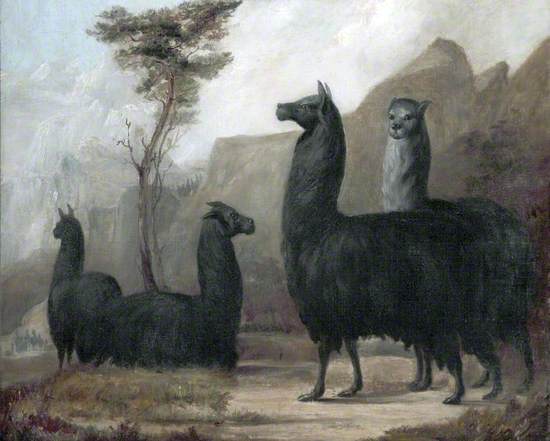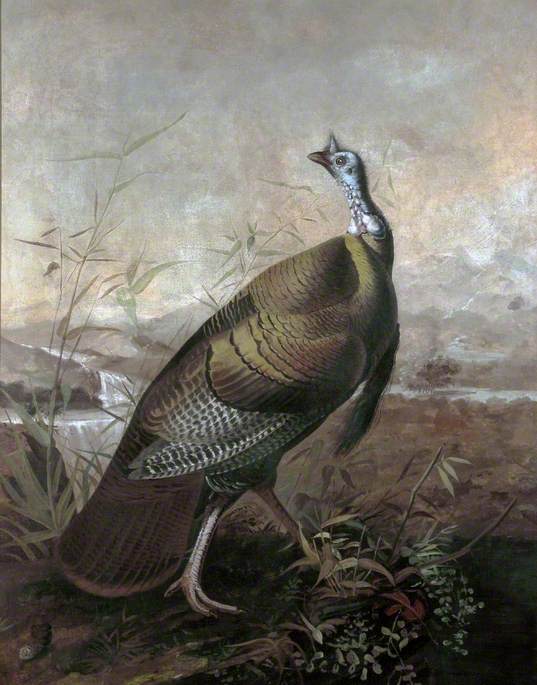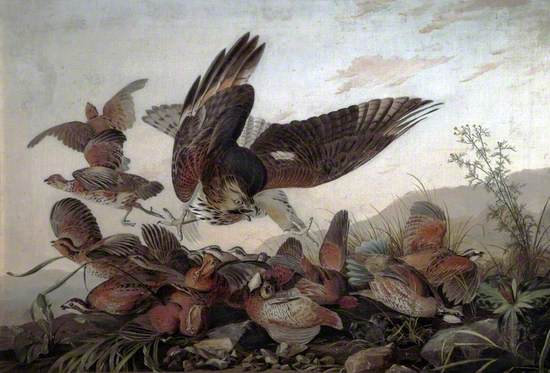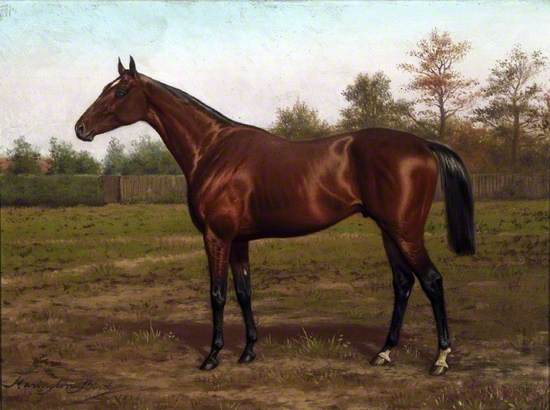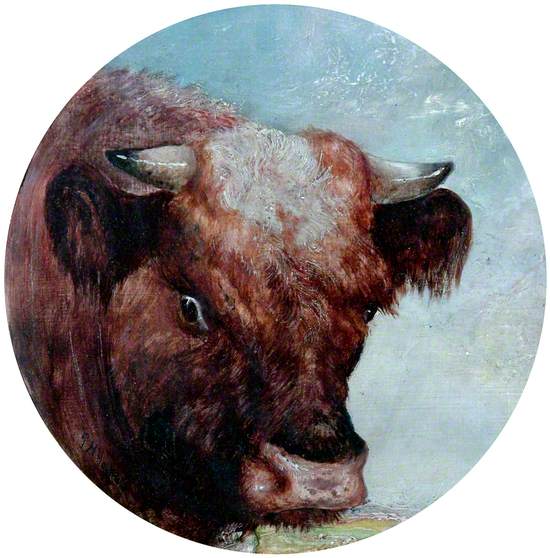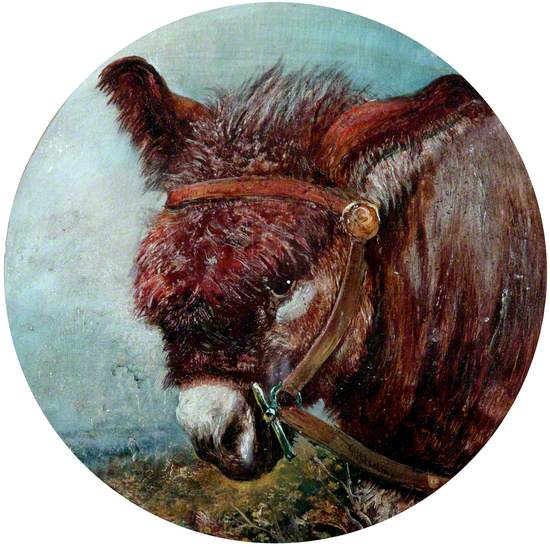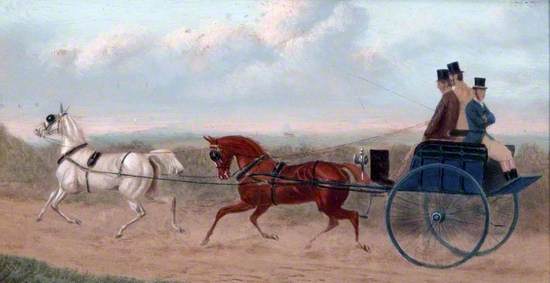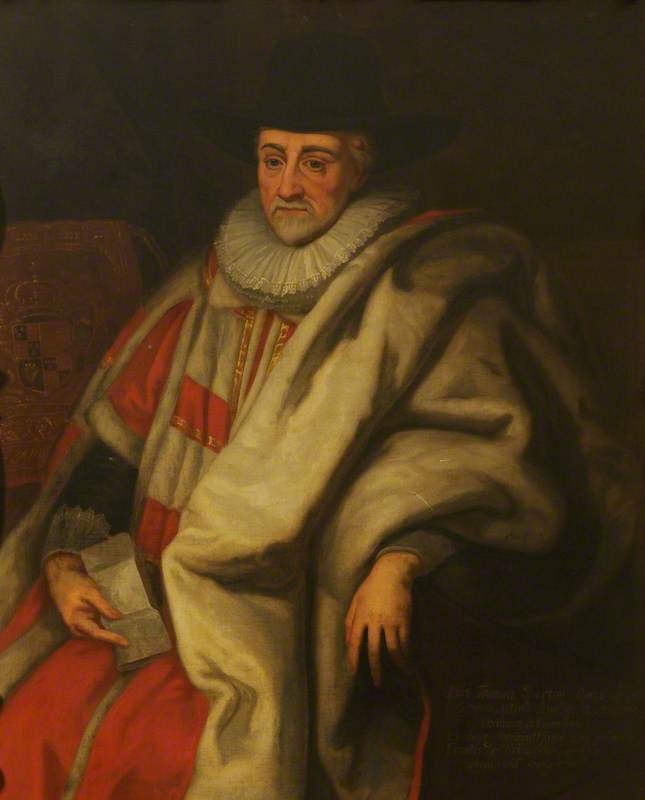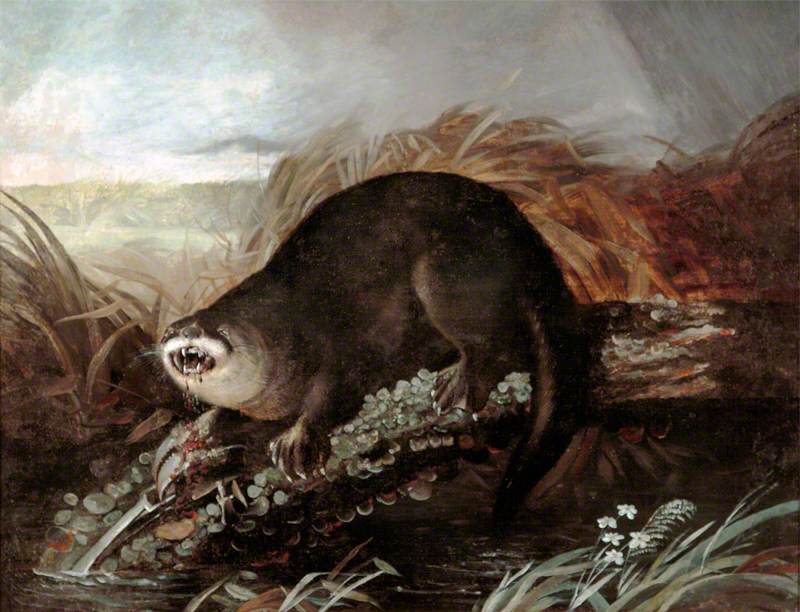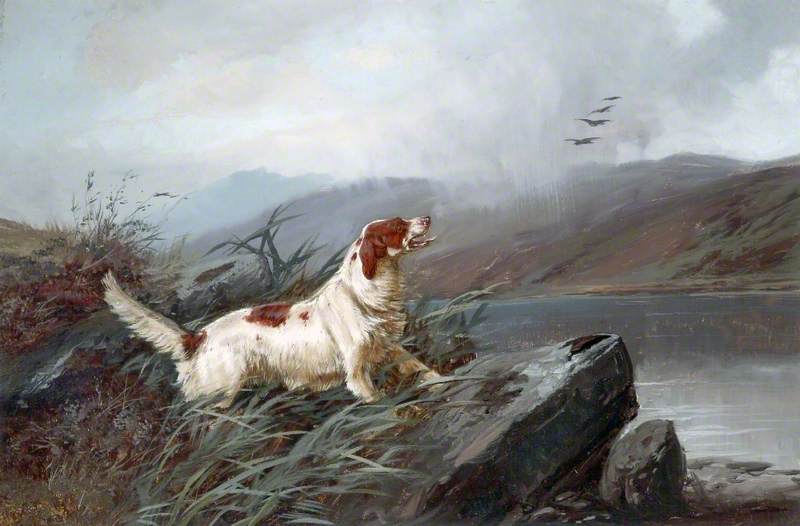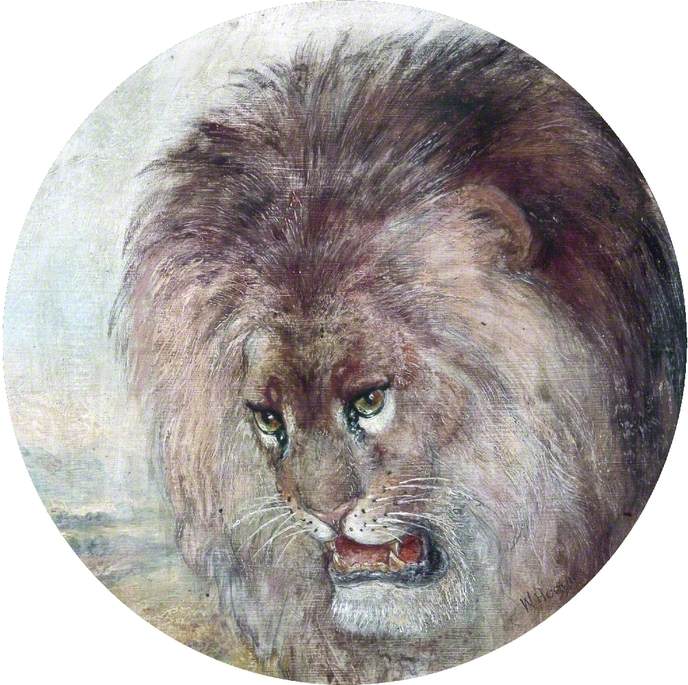The Victoria Gallery & Museum is part of the University of Liverpool which has been collecting art since its inception in the 1880s. Here is a selection of paintings from the collection featuring animals. All are available to purchase as prints from the Art UK shop.
Alpacas
Who doesn't like an alpaca? Or four. Agasse was a Swiss-born artist specialising in animal painting who studied veterinary science to get a better anatomical understanding of his subjects. He came to England after a chance meeting with George Pitt (later Lord Rivers) who wanted a painting of his favourite greyhound which had just died. Once here, Agasse painted a number of exotic animals from a menagerie at Exeter Exchange in The Strand, London.
The Anxious Mother
An anxious ewe scans the sky for predators as her ailing lamb lies on the mountainside. Scottish black-faced sheep were a favourite subject of Ansdell, a leading animal painter of the Victorian era. Indeed he was so fond of them he kept a flock in the garden of his London home so he could paint them there. Born in Liverpool, he is the only British artist with a place named after him: Ansdell on Lancashire’s Fylde coast where he once had a holiday home.
Richard Ansdell (1815–1885)
Oil on canvas
H 154 x W 108 cm
University of Liverpool
American Turkey
Audubon was an ornithologist and painter who is best remembered for his important illustrated book, Birds of America, published in stages between 1827 – 1838. An illustration after this painting is included in the book which contains 435 images of North American birds. The turkey is shown in front of the Falls of Ohio near Louisville where the artist was living. Audubon had an eventful life before settling in America. He was born in Haiti, raised in France and emigrated to America as a young man, becoming an American citizen in 1812.
John James Audubon (1785–1851)
Oil on canvas
H 153 x W 123 cm
University of Liverpool
Hawk Attacking Partridges
Audubon exhibited this painting, along with six others, at the Royal Institution Liverpool in 1827. He'd come to the city seeking patronage and support for his epic undertaking to publish the illustrated book, Birds of America. He stayed with William Rathbone, a wealthy merchant and influential figure in Liverpool. Rathbone introduced Audubon to important people in the city and hosted the promotional Royal Institution exhibition, enabling the artist to successfully continue with his project. The VG&M has a gallery dedicated to Audubon.
John James Audubon (1785–1851)
Oil on canvas
H 86 x W 119 cm
University of Liverpool
'Leo' the Favourite
Ever wondered why lions always seem to be called ‘Leo’? It’s because leo is the Latin word for lion. This particular beast may have been part of Wombwell’s Travelling Menagerie or Liverpool’s zoological gardens. Both had lions and were favourite haunts of Huggins, a Liverpool-born artist with a deep love of animals. In fact, it has been said he much preferred animals, especially chickens, to people and kept a house full of pets. It was also said Huggins kept his hair shaggy and unkempt and look a bit like a lion himself.
'Isinglass' Triple Crown, 1893
Isinglass was one of the most famous racehorses of his day, being a 'Triple Crown' champion who won the 2,000 Guineas Stake at Newmarket, the Derby at Epsom and the St Ledger Stakes at Doncaster in 1893 as a three-year old. During his career Isinglass ran twelve races and won eleven times; his earnings of £58,655 was a world record at the time. He was retired in 1895 after winning the Ascot Gold Cup and became a successful stud until his death aged 21. His skeleton is in the Natural History Museum collection.
John Alexander Harrington Bird (1846–1936)
Oil on panel
H 23 x W 31 cm
University of Liverpool
.
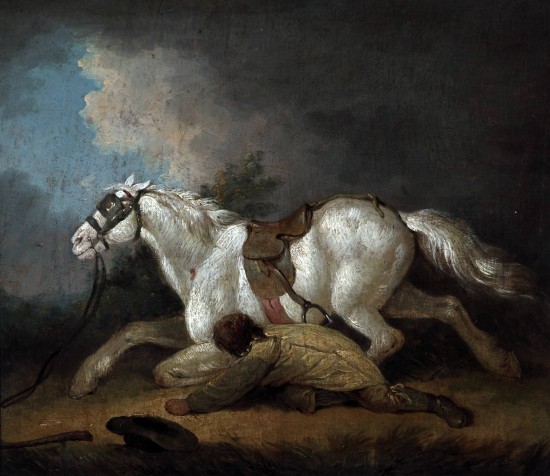
Thunderstorm
Startled by thunder, a horse has bucked and lost its footing, leaving its unfortunate rider sprawled in the road. The artist, George Morland, was a prolific painter especially known for his depictions of rustic life and its underworld. Although highly successful, Moreland seemed unable to rise above an underworld of his own making and was plagued by debt, ending up in the notorious Marshalsea debtors’ prison. He was released in 1802 but his health was ruined and he died two years later.
Thunderstorm, George Morland (1763 - 1804), University of Liverpool
Bull's Head
This rather irritated-looking bull glaring at the viewer is an unusual subject for Holmes, who is better known for attractive paintings of children with animals. Based in London, Holmes was a significant painter in his day, regularly exhibiting at the Royal Academy and other major venues.
Donkey's Head
A slightly wonky donkey by artist George Augustus Holmes. He made a successful career from painting rather sentimental genre scenes of children with their pets, but also depicted more rustic subjects such as farmyard scenes and other aspects of country life.
Three Men Riding on a Horse and Trap
Three men sit on a dog cart, a type of carriage originally developed to transport retriever dogs to and from shooting parties. The driver and passenger faced forward while the rear section had a box where the dogs could lie and shooting accessories were stored. Over time, dog carts developed into a more general runabout with a backward facing seat installed for even greater flexibility. Here, the rear passenger is dressed in the usual livery of a coachman or groom. The painting dates from about 1820.
unknown artist
Oil on panel
H 9.7 x W 18.8 cm
University of Liverpool
